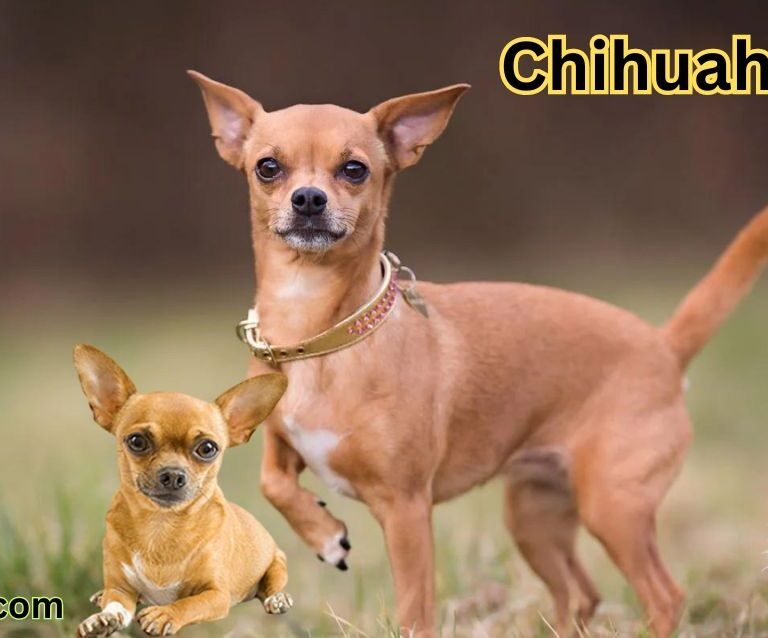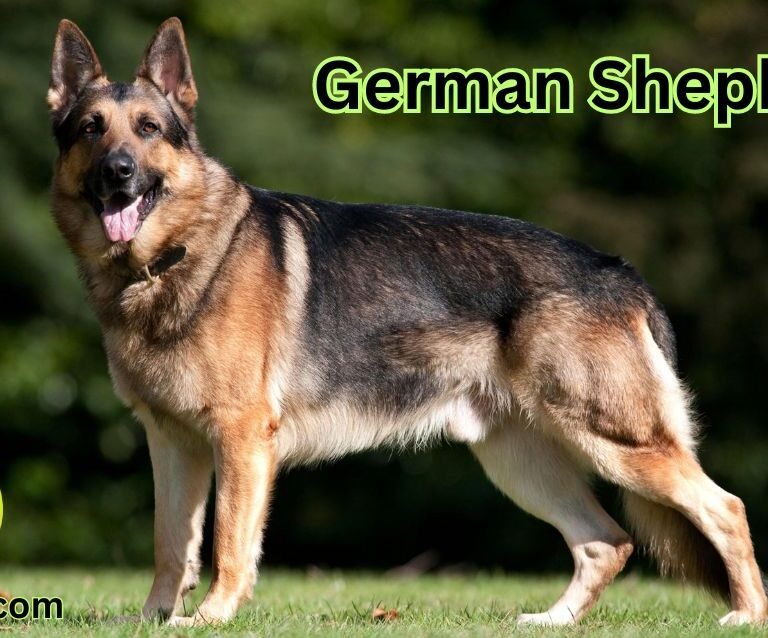Doberman Pinscher
The Doberman Pinscher is a breed renowned for its striking appearance and exceptional behavioral traits, which have garnered a considerable following among dog enthusiasts and families alike. Originally developed in Germany during the late 19th century by a tax collector named Karl Friedrich Louis Dobermann, the breed was intended to provide protection and companionship. As a result of careful breeding, Doberman Pinschers have become synonymous with loyalty, intelligence, and versatility.
This breed is particularly appreciated for its reputation as both a devoted family companion and a competent guard dog. Their strong protective instincts make them an excellent choice for individuals seeking a reliable guardian for their homes, while their affectionate nature allows them to thrive within family settings. Doberman Pinschers are known to form strong bonds with their families, often displaying loyalty that makes them feel both loveable and secure.
Understanding the origins, personality traits, and characteristics of the Doberman Pinscher is essential for both current and prospective owners. This knowledge not only enhances the relationship between the dog and its owner but also provides insight into responsible breeding practices and the potential risks associated with breed-specific behaviors, ultimately enabling a fulfilling companionship.
Origins of the Doberman Pinscher
The Doberman Pinscher, a breed known for its intelligence and loyalty, has a rich history that traces back to Germany in the late 19th century. This breed was developed by a tax collector named Louis Dobermann, who sought to create a dog that could provide protection while he worked in potentially dangerous areas. Dobermann’s vision was grounded in practicality; he needed a canine companion that was agile, courageous, and capable of guarding him while performing his duties.
To achieve this, Dobermann selectively bred a mix of canine breeds. It is widely believed that the Doberman Pinscher’s lineage includes the German Pinscher, Rottweiler, Greyhound, and even the German Shepherd. The combination of these breeds resulted in a dog that possessed not only strength and endurance but also the sharp senses and intelligence required for protective tasks. The outcome of this breeding was a dog that could tirelessly guard property and provide companionship, making it an ideal match for those who needed a dependable guardian.
The creation of the Doberman Pinscher was particularly significant during the tumultuous years that followed its inception, as these dogs were employed for various roles, including police and military work. Their keen instincts and assertive demeanor made them well-suited for tasks that demanded vigilance and action. Furthermore, the breed was initially recognized for its loyalty and protective nature, qualities that continue to define the Doberman Pinscher to this day.
As the Doberman Pinscher gained popularity in Germany and beyond, it became evident that this breed was more than just a guard dog; it embodied the characteristics of a devoted companion. The historical journey of the Doberman Pinscher reflects not only its development as a working dog but also its adaptation into family life, highlighting its versatility and significance in canine history.
Understanding the Doberman’s Moderate Danger Level
The Doberman Pinscher is often perceived as a breed that carries a moderate danger level compared to other breeds. This classification largely stems from its protective instincts and potential for aggression if not properly managed. However, to accurately assess the danger level associated with this breed, it is essential to consider multiple factors, including socialization, environmental influences, and individual temperament.
Socialization plays a pivotal role in shaping a Doberman’s behavior. Early exposure to various environments, people, and other animals can significantly reduce the likelihood of aggressive tendencies. When Dobermans are socialized from a young age, they learn to navigate different situations appropriately, helping them to distinguish between normal and threatening circumstances. Consequently, responsible ownership promotes an understanding of the importance of social interactions, which ultimately contributes to lowering the danger level for this breed.
Moreover, environmental factors can greatly impact a Doberman’s demeanor. Instances where the breed is raised in stable and nurturing environments tend to exhibit more balanced behaviors, thus reducing the moderate danger associated with them. Contrarily, if a Doberman is exposed to neglect or mistreatment, it may develop insecurities leading to defensive behaviors. Therefore, prospective owners should be diligent in providing a safe and loving environment, as this significantly influences the dog’s overall temperament.
Lastly, individual temperament cannot be overlooked when considering the Doberman’s danger level. Each dog is unique, and personality traits can vary within the breed. Thus, understanding the individual dog’s characteristics is vital in assessing its behavior and risk factors. Responsible ownership, emphasizing training, socialization, and appropriate care, ensures that the Doberman Pinscher can thrive as a loyal and loving family companion while mitigating its moderate danger level.
Key Traits of the Doberman Pinscher
The Doberman Pinscher is renowned for its distinct traits which have made it a favored breed for companionship and various working roles. Among its most notable characteristics is intelligence. This breed exhibits a high capacity for learning and problem-solving, often dominating obedience training and canine sports. For instance, Dobermans can be trained to perform complex tasks, such as search and rescue operations, thanks to their quick grasp of commands and keen understanding of their environment.
Alertness is another defining trait of the Doberman Pinscher. This breed possesses an innate vigilance that makes it an excellent guard dog. Dobermans are known for their acute senses, allowing them to detect the slightest changes in their surroundings. This heightened alertness translates into a protective instinct, as they are quick to respond to potential threats while remaining calm and poised. Consequently, their presence is a deterrent to intruders, and their reaction time is often swift, showcasing their natural predisposition for protecting their families and properties.
Loyalty, an outstanding feature of the Doberman Pinscher, is often highlighted by the powerful bond it shares with its owner. Dobermans exhibit unwavering devotion, making them exceptional companions for families and individuals alike. This loyalty can be seen in their behavior; they tend to follow their owners closely and often display protective behaviors in social settings. For instance, a Doberman may instinctively position itself between its owner and an unfamiliar person, reflecting its commitment to safeguarding its family.
In summary, the Doberman Pinscher is characterized by its intelligence, alertness, and exceptional loyalty. These traits not only enhance their appeal as pets but also li the breed’s effectiveness in various working roles, ranging from therapy dogs to security personnel.
The Doberman as a Guard Dog
The Doberman Pinscher is widely recognized for its efficiency and dependability as a guard dog. This breed’s origins can be traced back to the late 19th century in Germany, where a tax collector named Louis Dobermann sought to create a breed capable of protecting him during his rounds. This historical necessity has shaped the Doberman into a dog characterized by its intelligent, alert, and formidable presence.
One of the primary qualities that make the Doberman an excellent guard dog is its deeply ingrained protective instinct. These dogs are instinctively guarded and possess a natural ability to assess potential threats. Their acute senses often grant them an edge in detecting unusual noises or movements, allowing them to act as vigilant watchdogs. This innate protective nature, combined with their physical prowess, allows them to respond swiftly and decisively if a situation arises that threatens the safety of their family or premises.
Moreover, the Doberman’s loyalty to its owner significantly enhances its effectiveness as a guard. This breed forms strong bonds with family members, which fuels its desire to protect. A Doberman will often exhibit a fearless demeanor when faced with intruders, making it a powerful deterrent against potential threats. This loyalty, coupled with their intelligence, allows them to be trained effectively in obedience and protection, making them not only capable but also reliable guardians. Additionally, socialization and proper training are essential components in honing their protective abilities, ensuring that they can differentiate between genuine threats and normal activities within their environment.
In conclusion, the Doberman Pinscher’s combination of protective instincts, unwavering loyalty, and physical capability not only reflect its suitability as a guard dog but also underline its enduring reputation in various roles that require vigilance and reliability.
Risks of Ownership: Understanding Aggression
The Doberman Pinscher is widely recognized for its loyalty and protective instincts, qualities that make it an exceptional companion for many owners. However, these same traits can present risks for individuals who own this breed. The natural tendency of Dobermans to display aggression, particularly towards perceived threats, requires prospective owners to be informed and prepared for such challenges. This aggression is often a result of their instinctual roles as protectors, deeply rooted in the breed’s origins as guard dogs.
A Doberman Pinscher may exhibit aggressive behaviors in situations where it feels that its family or territory is under threat. This protective instinct can manifest in varied ways, ranging from barking to more serious aggression, making it critical for owners to recognize these behaviors early. Understanding the triggers for aggression is paramount; factors such as unfamiliar people, loud noises, or any sudden movements can provoke a defensive response. Therefore, actively socializing a Doberman from an early age is essential to managing its protective instincts effectively.
Moreover, the importance of consistent training and reinforcement of positive behaviors cannot be overstated. An adequately trained Doberman is likely to respond better to commands and exhibit more controlled responses in stressful situations. Utilizing professional training programs, which often focus on obedience and addressing aggression, can be invaluable for new owners. Awareness of the breed’s natural tendencies and potential for aggression allows owners to create a safe and structured environment, ensuring the dog’s natural instincts are channeled productively rather than destructively.
In conclusion, owning a Doberman Pinscher undoubtedly comes with significant responsibilities. By fully understanding the potential risks associated with aggression and taking proactive measures, owners can foster a nurturing atmosphere that supports both their dog’s well-being and the safety of those around them.
The Importance of Consistent Training
Consistent training is crucial when it comes to managing the dominant nature of Doberman Pinschers. While these dogs are incredibly intelligent and eager to please, they can also exhibit strong-willed behaviors if not properly guided. Establishing a structured training regimen from an early age not only helps in developing a well-mannered dog but also fosters a strong bond between the dog and its owner. Positive reinforcement techniques, such as rewards and praise, are particularly effective and encourage the dog to engage in desirable behaviors.
Training should be started during the puppy stage, as early socialization is vital for Doberman Pinschers. Exposing them to various environments, people, and other animals helps in building their confidence and reduces the chances of fear-based reactions as they mature. Consistent obedience training sessions can further establish authority and create a clear understanding of commands. This ongoing training can be beneficial in effectively managing their natural guarding instincts, a characteristic feature of the breed.
It is important to maintain consistency not only in commands but also in rules and expectations to prevent confusion. All family members should agree on the training approach to ensure a united front when teaching commands or correcting undesirable behaviors. Incorporating play into training can also make the process more enjoyable for both the dog and trainer. Regular training sessions, ideally lasting 10 to 15 minutes each, can yield significant results and help maintain a well-behaved Doberman.
Failure to implement consistent training may lead to a range of behavioral issues, such as aggression or excessive barking, often resulting from a lack of clear direction. Hence, regular and structured training is indispensable for any Doberman owner aiming to cultivate a balanced and harmonious relationship with this remarkable breed. Ultimately, consistent training not only ensures good behavior but also enhances the overall quality of life for both the dog and its family.
Socialization: A Key Factor in Behavior
Socialization is a crucial factor in the development of a Doberman Pinscher, influencing its temperament and behavior throughout life. Proper socialization from an early age helps to cultivate a well-adjusted and confident dog, capable of handling various stimuli without fear or aggression. To adequately socialize a Doberman, it is essential to expose them to a broad range of environments, people, and animals. This exposure should ideally begin during puppyhood, as experiences during this critical period can significantly shape their outlook on the world.
One effective strategy for socializing a Doberman Pinscher includes introducing the puppy to different environments, such as parks, urban settings, and homes with diverse families. Gradual exposure to these varying surroundings allows the Doberman to acclimate to new sights, smells, and sounds, building their confidence and adaptability. Additionally, it is crucial to ensure that these experiences are positive; negative encounters can lead to anxiety or fearful behavior later in life.
Engaging with various people is another vital aspect of socialization. Encouraging friends, family, and even strangers to interact with the puppy can help familiarize them with different human behaviors and appearances. This practice promotes a friendly disposition toward humans and lessens the chances of the Doberman becoming overly protective or hostile.
Similarly, introducing the Doberman to other animals, particularly other dogs, is paramount. Puppy training classes provide an excellent opportunity for socialization, allowing young Dobermans to learn appropriate play behaviors and establish polite interactions with canine peers. Observing and mimicking older, well-socialized dogs also aids in teaching them proper canine etiquette.
In conclusion, comprehensive socialization is essential for a Doberman Pinscher’s development into a balanced and well-behaved companion. Through positive exposure to a variety of social situations, Dobermans can grow into confident, adaptable dogs, ready to engage with the world around them.
The Ideal Home for a Doberman Pinscher
In examining the Doberman Pinscher’s unique traits and characteristics, it becomes clear that this breed requires a specific type of environment to thrive. The ideal home for a Doberman is one that understands and accommodates the breed’s innate intelligence, loyalty, and energetic nature. Prospective owners must be prepared to provide structured consistency and engaging activities to meet the dog’s physical and mental stimulation needs.
A Doberman Pinscher flourishes in a space that allows for ample exercise; thus, a home with a sizable yard or access to parks for vigorous walks and play is essential. This breed is known for its muscular build and high energy levels, making regular physical activity crucial to avoid boredom and destructive behaviors. Engaging in obedience training and interactive games not only provides necessary exercise but also fosters a stronger bond between the Doberman and its owner.
Moreover, potential owners should prioritize creating a stable environment. Dobermans are sensitive and can experience anxiety if their surroundings are chaotic. Establishing a consistent routine will help the dog feel secure and nurtured. It is important to socialize a Doberman from an early age to ensure it develops a well-rounded temperament, allowing it to coexist harmoniously with other pets and children.
Safety is another key consideration in the perfect home for a Doberman. Providing secure fencing and monitoring outdoor playtime minimizes the risk of perilous escapes or altercations with other animals. As a guardian breed, Dobermans are driven by their instinct to protect their families; therefore, proper training is crucial to ensure their guarding instincts do not manifest as aggression.
In summary, to create an ideal environment for a Doberman Pinscher, prospective owners must commit to physical and mental engagement, maintain a stable household, and prioritize safety. Meeting these responsibilities ensures that both the dog and its family can enjoy a harmonious and fulfilling relationship.









